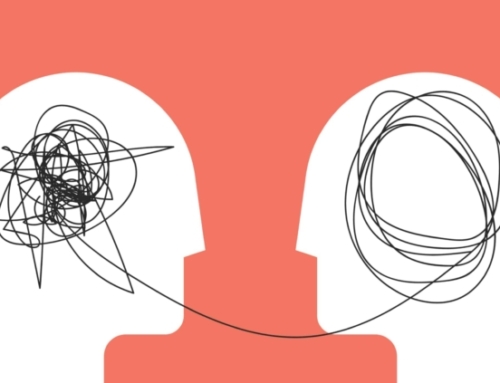We have evolved to survive. One survival strategy that has been selected is based on our capacity to anticipate the future. Anticipation has two aspects: one, is our use of information from the present and the past to extrapolate patterns and imagine possible future outcomes and, two, is our capacity to plan for these possibilities to reduce the risk they pose to us. Once this is in place, we can act on our plans and deploy these risk-lowering strategies. Breakdowns in this anticipatory strategy can occur at any of the above steps, an issue I address later. Further, this anticipatory capacity works at several temporal levels: on the level of minutes, days, and decades.* Individuals differ on their ability to anticipate, plan for, and deploy risk-management strategies along these different time-frames. For example, a person may be very good at anticipating problems arising with their boss during the workday but be very poor at planning their vacation time-off later in the year, and, then again, be very good at planning for their retirement financial security.
This anticipatory capacity has volitional and non-volitional components and conscious and non-conscious components. For example, how do I decide which threats to consider most and plan for? Threats can confer lesser or greater aversive consequences, like a small financial risk versus death, and lesser or greater probability. We tend to both underestimate some risks and overestimate others. Some of these inaccuracies in prediction are common among people and are referred to as cognitive biases which are often non-conscious and non-volitional. Other inaccuracies are based on a person’s previous individual (formative) experiences. For example, if a person lived through the death of a parent that occurred when that person was nine years of age, that person is now likely to overestimate the risk of their own early death or that of family members, including their children.
Clearly, these anticipatory capacities have survival value. The people that successfully imagine and plan for the future are more likely to survive (and procreate) than those who do not. But now, perhaps due to the complexity of modern life, these anticipatory capacities increasingly show a dark side. They manifest as chronic worry (cognitive and at least partially under voluntary control) and as anxiety (emotional and mostly not under voluntary control).
Anxiety disorders are the most common category of psychiatric illness and are becoming increasingly common.1 Worry is only one component of anxiety but a common one and perhaps the one most likely to keep the anxious feelings revved up for months or years on end. Although chronic worry makes a person feel miserable and leads to poorer life outcomes, it nevertheless remains compelling; it is hard to give up. In fact, a person with chronic worry thoughts, if given a choice, would often choose not to give up those thoughts, painful though they may be. This is what makes worry ruminations so confounding: they are counterproductive and at the same time compelling, not easily given up.
Why is this so? It is because we are designed to anticipate, plan for, and deploy strategies to minimize risk. Worry thoughts share features with anticipating and planning for risk and, as a result, to increase one’s odds of remaining safe. Therefore, to help a person, especially one with a lifetime of worry ruminations and a temperamental style of behavioral inhibition, overcome their worry ruminations and by extension, their anxiety disturbances, a clinician must give the worry ruminations their due. This means to discuss them with the patient and allow the patient (and the clinician too) to understand the aspect of worry that is associated with survival value. Worry is good — but only partly so — and the part that is bad is often very bad. Both aspects should be explored and acknowledged, the good and the bad. The next step is to explore with the patient — as opposed to decreeing to the patient — what alternative strategies the patient can use that would retain the good, the survival-enhancing aspect of worry, while minimizing the painful, overly-life-constraining aspect.
To place this suggested approach in context: there is a commonly applied approach to addressing worry in psychiatry. It is the CBT approach, which is to identify the illogical nature of each worry thought and challenge its logic or likelihood of occurrence. A second common approach is core to mindfulness-based therapies. This approach entails accepting the presence of worry ruminations but distancing oneself from them, taking the stance of observing them come and go but not otherwise engaging with them, including not challenging them on their logic or likelihood. The approach I suggested above is complimentary to the CBT and the mindfulness-based approaches. It is to explore the pros and cons of worry thoughts in general and accept, acknowledge, and perhaps even celebrate their beneficial function. And, from there, to explore better alternatives.
Here I return to the three aspects future risk-minimization: anticipating the future, planning for it, and implementing those plans. Often people with chronic worry and anxiety, continue to worry but do not follow through on mitigating against the risks the worry thoughts raise. One example is the student chronically worried about their grades, who doesn’t actually study diligently for exams, do their best on their assignments, or talk to their teacher about how they can do better or to clarify areas of confusion. Another example is the parent who worries about dying early and leaving their children unprotected, yet who doesn’t complete a will, set up an estate, nor discuss with family members or close friends about the possibility of caring for their children in the event of their death.
Of course, some worry ruminations are indeed illogical. If so, they can be managed through identification and challenge or through distancing and equanimity. But many worry ruminations have some relation to real-life risks. These are the types of thoughts — at least in my experience working with patients — that are least amenable to alteration or dismissal through CBT techniques. I’ve heard many times, “But you don’t understand Dr. Jack. My concerns are not a figment of my fevered imagination. They can really happen!” Yes, and these are the types of worries that can be acted upon so that they are less likely to “really happen.” It may seem counterintuitive or ironic, but often the people who worry the most about more or less realistic concerns are the ones that do the least to actually prepare for and mitigate against these risks. In fact, this is not so counterintuitive: worry is so denervating and demoralizing, and emotionally and physically exhausting, that there is little energy left to take the real-world steps to keep oneself and one’s loved ones safer.
A common pre-emptive complaint I hear, one voiced by people I suggest tackle their concerns through practical effective action, is, “Yeah, what you say about decreasing risk makes sense, but it doesn’t eliminate it. It is still there, and I can still worry about it.” My answer is, “Sure. How about we stop talking about this and, instead, you take the steps I’m recommending. Once you’re done, then we’ll talk about it, and tackle whatever is left.” Haha. Of course, I don’t use these words, but I do couch just this message in a more ‘thoughtful way.’ I have to admit that most people resist taking these common-sense steps. After all, many patients with anxiety have a life-long pattern of worry and a temperament of behavioral inhibition.
And, in addition, there are often still other aspects that lead to resistance to letting go of worry. What these other motivations to worry are may need to be addressed, and lead to an exploration of worry in the life of the patient. For example, what do the worry ruminations ‘protect’ the patient from? Maybe holding fast to scary imaginings is safer than facing the inchoate and boundless randomness and contingency of all of life. Thinking about danger somehow domesticates it, makes it less likely to appear out of nowhere. Also, no matter what any of us do, we will likely get sick and injured, and eventually we will all die.
For some people, this is the great big underlying and unacknowledged fear. For some, this is such a fear because they fear dying ‘prematurely,’ before they can actually experience the richness of life. This is the locus of still another irony: anxiety and worry drastically separate a person from a full experience of life. The content of their worry and anxiety is about dying without experiencing life and the cause of this missing out is that very worry and anxiety. This may seem like a Gordian knot, but it is not: opening the discussion with a patient about these issues can help the patient start reflecting and feeling all their pain and regret and loss and resentment. This emotional ‘getting in touch with oneself’ can break the logjam and lead to a commitment to change, to take risk, and to see that there is no single silver bullet, that nothing is ever done perfectly or forever, that life is temporary and filled with loss and sorrow, but also with love and beauty and goodness and just the sheer bounty of it all.
Thanks,
Dr. Jack
Language Brief
“Anxiety is the dizziness of freedom.” ― Søren Kierkegaard
“Worrying is carrying tomorrow’s load with today’s strength- carrying two days at once. It is moving into tomorrow ahead of time. Worrying doesn’t empty tomorrow of its sorrow, it empties today of its strength.” ― Corrie Ten Boom
“Man is not worried by real problems so much as by his imagined anxieties about real problems” ― Epictetus
“There was not one amongst us who looked forward to being born. We disliked the rigours of existence, the unfulfilled longings, the enshrined injustices of the world, the labyrinths of love, the ignorance of parents, the fact of dying, and the amazing indifference of the Living in the midst of the simple beauties of the universe. We feared the heartlessness of human beings, all of whom are born blind, few of whom ever learn to see.” ― Ben Okri, Famished Road
Notes
*We also ‘anticipate’ the future on the order of milliseconds to seconds, but this capacity is one of non-conscious reaction to an observable threat through the freeze, fight, or flight responses. I did not discuss this capacity here.
Resources
- Bandelow, Borwin, and Sophie Michaelis. “Epidemiology of anxiety disorders in the 21st century.” Dialogues in clinical neuroscience 17.3 (2015): 327.







Leave A Comment